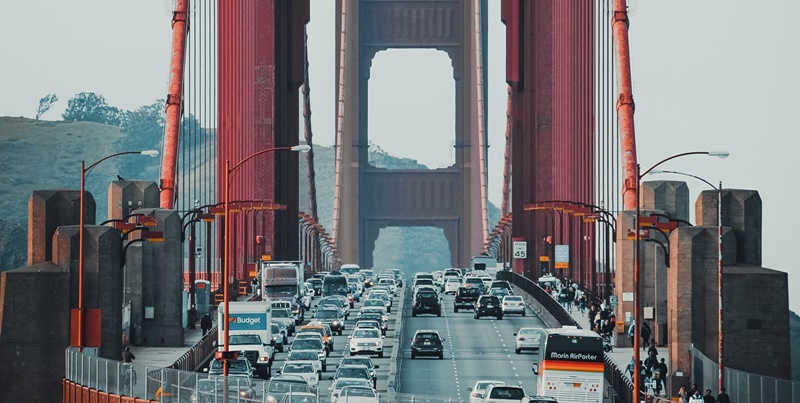By Nick Reynoso, California Climate Action Corps Fellow
Nick Reynoso joined us this summer as a California Climate Action Corps Fellow with a focus on our Resilient Neighborhoods program in Suisun City and building connections with community members and local environmental leaders. In this blog, he offers his reflections on climate change and the risks it holds for coastal cities — and ways to prepare.

Transportation requires extensive use of fossil fuels. The accumulation of greenhouse gas (GHG) emissions from fossil fuels is having irreversible effects on our planet and will lead to greater natural disasters to our local communities: storms, floods, wildfires, etc.

Nick Reynoso
During the height of stay-at-home orders back in April 2020, daily carbon dioxide emissions decreased by 17 percent from 2019’s global mean levels. It looked as if society had found a way to reduce carbon emissions and rethink the idea of what is considered essential travel. This all sounded like good news and a win for the environment; however, it wasn’t here to last.
In December 2020, the world had reverted back to its old habits, and GHG emissions bounced-back to 2 percent higher than what they were in December 2019.
With businesses reopening and life returning back to “normal” following the COVID-19 vaccine rollout, the desire to travel is greater than ever. Most are looking for ways to get out of the house and by doing so, the International Energy Agency predicts for 2021, there will be a global energy demand of 4.6 percent, which is 0.5 percent higher than 2019’s demand. It is estimated that carbon dioxide emissions will increase by nearly 5 percent. This trajectory is unsustainable, as the demand does not divest fossil fuels, and the shift towards renewable energy is needed.
The latest Intergovernmental Panel on Climate Change report unequivocally states that the warming of the planet is caused by human activity. These activities have also affected the water cycle (changes to precipitation), and are the cause of warmer ocean temperatures and rising sea levels. We are on course to reach 1.5℃ above pre-industrial levels by 2040.
What is the Greenhouse Effect?
Solar radiation from the sun hits the planet, it reflects into space and in the atmosphere. Infrared radiation is emitted from the earth’s surface, allowing some of the heat to escape into space, but with the influx of greenhouse gases in the atmosphere, the heat is absorbed by GHG molecules and reemitted throughout the atmosphere, having to trap the heat and thus warming the planet. This is known as the greenhouse effect, and this is the contributing cause of climate change.
With climate change, rising temperatures cause glaciers and ice sheets to melt, and cause the water from the ocean to expand due to thermal expansion. All these events contribute to rising sea levels. With an unprecedented rate of rising temperatures, coastal flooding will be inevitable. This will affect coastal communities, and affect large portions of the U.S. Nearly 40 percent of Americans live in coastal counties.
The San Francisco Bay Area Conservation and Development Commission projects that sea level will rise between 6 and 10 inches by 2030, and 13-23 inches by 2050. Vulnerable low-lying Bay Area cities, such as Suisun City will be impacted from severe flooding events. The objective to mitigate and plan for natural disasters is urgent for Suisun City and other Solano County cities that face flooding threats, such as Benicia and Fairfield. As a California Climate Action Corps Fellow for Sustainable Solano this summer, I attended a number of Flood Walks that shared the flood risks for the city with attendees. The information presented during these walks makes it more apparent that Suisun City will be breached from flooding of Total Water Level (TWL) events: tidal waves, storm surge, and rising sea levels.
The Flood Resilience Action Plan (FRAP) now in development for Suisun City will plan and mitigate for future TWL flooding events. FRAP and the Flood Walks are supported through a grant from the PG&E Corporation Foundation, which supports Sustainable Solano’s Resilient Neighborhoods program. Increasing awareness for Suisun City residents about flooding and development of the FRAP will help prepare for severe flooding events.
We are still rebounding from the COVID-19 pandemic’s “lost year,” and there are lessons we can learn from it. To redefine what is considered “essential travel” will lessen the accumulation of GHG emissions from transportation. Such decisions could decide the fate of local Bay Area cities.

